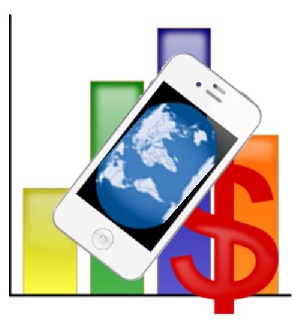Smartphone based purchases are representing a very large proportion of the overall figure.
The largest online marketplace in India, Snapdeal, has just released its mobile commerce data in that it has revealed that at the moment 30 percent of online purchases are originating from smartphones.
This trend has appeared to increase to a tremendous degree on the website, skyrocketing over last year’s figures.
When compared to the mobile commerce proportion of online purchases, last year, it looks as though the figure has grown by a tremendous 10 times. This is because at the same time last year, only 3 percent of the Snapdeal purchases were originating from smartphones.
The mobile commerce research was conducted by Snapdeal, itself, and provides insight into buying behaviors.
This mobile commerce study provided interesting and useful knowledge regarding the way that consumers behave, and the trends that are forming around them. The average number of visitors recorded by Snapdeal for its website was between 35 and 40 million per month. Among them, 12 million are from smartphones. From that 80 percent is organic, and 60 percent is new to the website. Among those shopping from their smartphones, 75 percent were COD, while the last quarter paid in advance.
This last data suggests that consumers may not be entirely comfortable making mobile commerce purchases online, and that they are taking precautions by paying on delivery instead of trying to pay in advance before they have received the product, in the vast majority of circumstances.
The majority of the mobile commerce visits to the sites originated from the cities of: Hyderabad, Bangalore, Kolkata, Chennai, Mumbai, and Delhi – listed in no particular order. The top selling categories over this channel on the Snapdeal website were clothing (both men’s and women’s), men’s footwear, flash drives, and memory cards.
This mobile commerce data, as a whole, suggests that the majority of smartphone users are shopping a great deal more over their devices and that this growth rate is an exceptionally rapid one considering the difference between the figures from last year and the statistics that have been recorded from this year.

 It is the data, itself, that often has the highest amount of worth. Though certain techniques are able to generate several levels of benefits, some geolocation tactics are able to allow marketers to arrive at certain goals better than others. As the technology is used by a growing number of marketers and on a more regular basis, the methods and techniques are growing in number and in polish.
It is the data, itself, that often has the highest amount of worth. Though certain techniques are able to generate several levels of benefits, some geolocation tactics are able to allow marketers to arrive at certain goals better than others. As the technology is used by a growing number of marketers and on a more regular basis, the methods and techniques are growing in number and in polish.